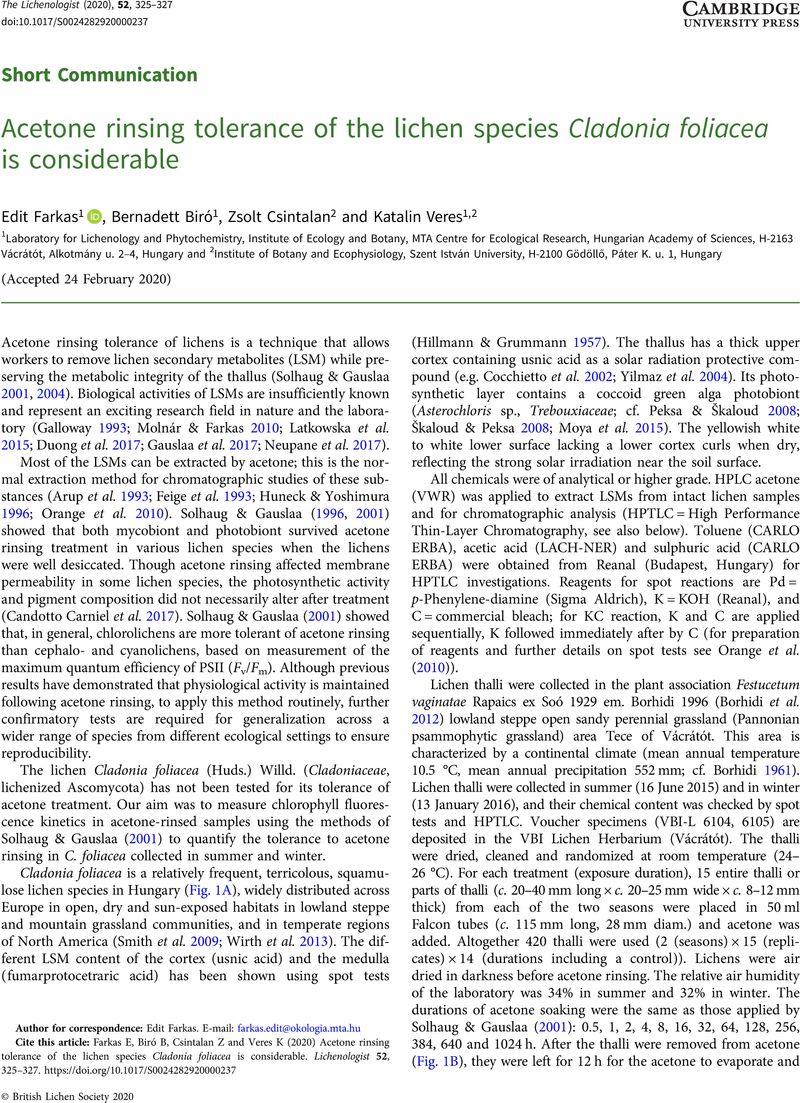Crossref Citations
This article has been cited by the following publications. This list is generated based on data provided by Crossref.
Ručová, Dajana
Đorđević, Tamara
Baláž, Matej
Weidinger, Marieluise
Lang, Ingeborg
Gajdoš, Andrej
and
Goga, Michal
2022.
Investigation of Calcium Forms in Lichens from Travertine Sites.
Plants,
Vol. 11,
Issue. 5,
p.
620.
Veres, Katalin
Sinigla, Mónika
Szabó, Krisztina
Varga, Nóra
and
Farkas, Edit
2022.
The long-term effect of removing the UV-protectant usnic acid from the thalli of the lichen Cladonia foliacea.
Mycological Progress,
Vol. 21,
Issue. 9,
Farkas, Edit
Xu, Maonian
Muhoro, Arthur Macharia
Szabó, Krisztina
Lengyel, Attila
Heiðmarsson, Starri
Viktorsson, Elvar Örn
and
Ólafsdóttir, Elín Soffia
2024.
The algal partnership is associated with quantitative variation of lichen specific metabolites in Cladonia foliacea from Central and Southern Europe.
Symbiosis,
Vol. 92,
Issue. 3,
p.
403.



